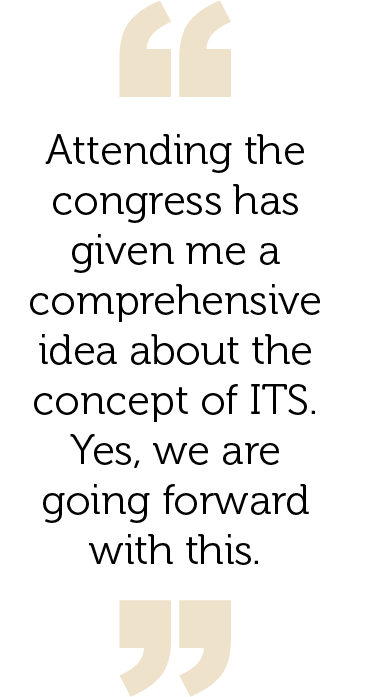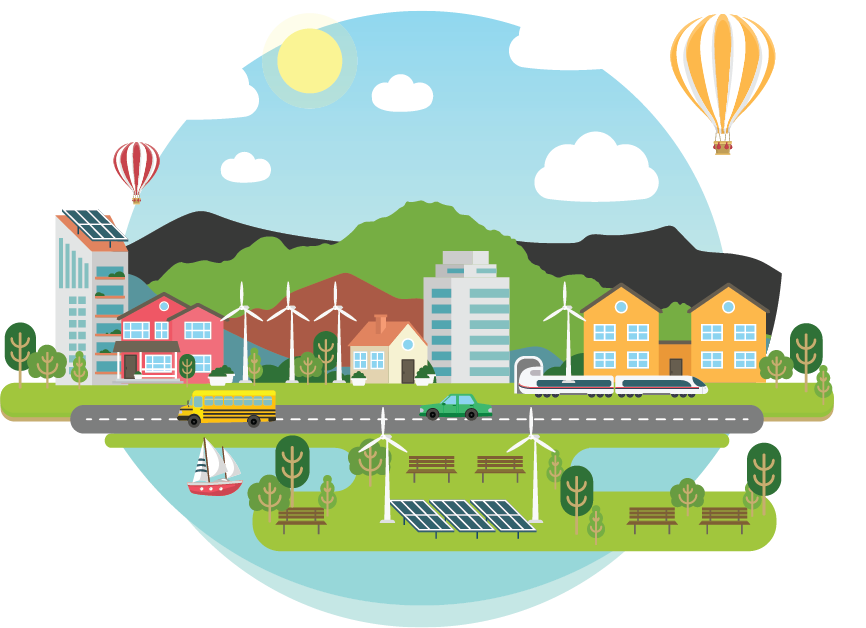Baru Bian shares his experience at the 25th ITS World Congress in Copenhagen
By Cecelia Alphonsus
In a recent interview with Selangor Journal, newly minted Works Minister, Baru Bian excitedly shared his recent experience at the biggest Intelligent Transport event; the 25th ITS World Congress in Copenhagen. Organised by ERTICO and the European Commission and hosted by the City of Copenhagen, the Congress drew over 10,000 participants from more than 100 countries to exhibit, demonstrate and experience the latest Intelligent Transport Systems and Services.
“Attending the congress has given me a comprehensive idea about the concept of ITS. Yes, we are going forward with this,” he said with an excited smile.
“I have come to understand the whole thing about ITS and how it relates to Industrial Revolution (IR) 4.0. Now they are already talking about IR 5.0,” he added referring to the Congress.
The theme of this year’s Congress was ‘ITS – Quality of life’ and it explored the countless environmental benefits of ITS. For example, Mobility as a Service (MaaS) apps can be used to help commuters choose the greenest route available and connected & automated vehicles can interact with road infrastructure to ensure a smoother drive and reduced emissions.
Autonomous vehicles
 “When I was there, there was a lot of display of autonomous vehicles, electric cars powered by electricity and batteries. We cannot just have technology for the sake of technology in ITS, it must enhance the quality of life and that attracts me.”
“When I was there, there was a lot of display of autonomous vehicles, electric cars powered by electricity and batteries. We cannot just have technology for the sake of technology in ITS, it must enhance the quality of life and that attracts me.”
The focus of this year’s ITS was very much on the future of driverless technology and Baru Bian eagerly shared with us his first experience with a driverless vehicle.
“I rode an autonomous vehicle there. Just like ordering a Grab, papapapap on your smartphone, pay everything then picit the car will arrive, no driver. Picit one more time, the door opens, go inside and sit in the car. If you don’t put the seatbelt on it won’t move until you put it on. Picit again the door closes and it moves.”
“It is going to be implemented in Paris next year, Singapore in restricted areas and many other major cities.”
Paris has committed to creating a legal framework that would allow the testing of Level 4 AVs on French public roads in 2019. Earlier this year in May, the Paris Region announced it will invest EUR 100M to make the Paris Region a global leader in terms of autonomous vehicle and future mobility solutions. The market for AVs in France could represent 47 billion euros as soon as 2020 and 515 billion in 2035.
Singapore is currently a testbed for AVs. The 2018 KPMG Autonomous Vehicles Readiness Index ranks Singapore in first place when it comes to policy and legislation as well as consumer acceptance.
Pushing the agenda
Inspired by what he learned and was exposed to in Copenhagen, Baru Bian is keen to spearhead the adoption of ITS in Malaysia.
“I intend to call for a meeting with all potential stakeholders; Ministry of Transport, Ministry of Energy, Science, Technology, Environment and Climate Change, Federal Territories Ministry, DBKL. We need to have one masterplan or at least a model where we can implement this. I can see Putrajaya or KL as the model for ITS where we can incorporate all these ideas.”
Planning, as Baru Bian shared, is at the core of an intelligent city as it creates the infrastructure needed to develop Intelligent Transport Systems.
“We were briefed there on how they plan their city with a master-plan with one architect. Creating the development of their whole city, they embrace the water and river which we can do here. We have plenty of rivers and streams. They even look at how the sunset strikes the water and trees to position their buildings. I was so attracted to the whole thing. I think we do talk about smart city but it is not coordinated. It is here and there.”
He admits that it would be a challenge in Kuala Lumpur but that did not dampen his enthusiasm.
“I’m very motivated. For Sarawak there is still hope. If I were to be the government in Sarawak I will introduce this concept in Kuching, Miri, Sibu and even Limbang or Lawas. It is all possible by taking the cue from Copenhagen and Gutenberg to embrace the water. It is inspiring how they clean and develop close to the bank of the river. How they move the development to areas that were empty before. Now it is a big city. Not just that, they also plan for the next 20,30, 50 years how the city will look like using 3D presentation.”
“To me that’s how we should plan for the city. But we don’t. Even cleaning the river is not a priority. Once you clean it you can introduce this and move into IR 5.0.”
Getting real about carbon emissions
“During the ministerial round table, a question was asked on how we can reduce the emission of CO2. I was very honest. For Malaysia, we don’t think about how to reduce in fact we contribute more every year. 6-12% increment of vehicles on the road. This is where these electric cars come in.”
“In Copenhagen, the focus is on bicycles to reduce traffic congestion. Cars are only used outside the city. I was wondering if this can be done in Malaysia because of the humidity. Then I met Singaporeans who said they are focusing on it now. I think it is possible in Malaysia if there is proper infrastructure. The connectivity to places and facilities must be improved.”
“Here’s an idea, once we have good infrastructure we should go to work cycling in our sports attire. Take a bath when we reach office and change into our work clothes. If we can begin to instil this kind of culture it’s possible. We get good exercise every morning.”
“If you have good infrastructure people can do it. I don’t mind. Go to work cycling. It can be done in Shah Alam or Putrajaya,” he says with a grin.
ITS on the horizon
“I think we are on our way already. We are talking about RFID and to integrate all systems. We have a bit here and there. Once we combine and integrate all systems, combining LRT, highway tolls, busses, etc, that is possible. How far we are in achieving it depends on the resolve of the government and this is what I am very concerned about.
“Malaysia through the Works Ministry has been participating in ITS. The question now is who will champion, coordinate and spearhead it? We need ITS. The next congress will be in Singapore and I promised our officers we will bring more of them to the congress. Japan brought 700 delegates, while we only took 30. The next congress we better bring 100 and learn.”
“I hope to table cabinet papers on it eventually and once our leaders grasp the whole concept of ITS I don’t think it will be long for us to achieve it.”
First-time elected Member of Parliament (Selangau, Sarawak) lawyer Baru Bian is the nation’s first leader of the Lun Bawang community to be appointed as a Cabinet Minister and best known for fighting several dozen court cases over a span of 25 years to defend native customary rights (NCR) land in Sarawak. Prior to his historic parliamentary seat victory in May 2018, Baru Bian was already the state assemblyman for Ba’kelalan in the Sarawak State Assembly since 2011.





